Mississippi Today
Reddit AMA recap: Rankin County Sheriff’s Department’s ‘Goon Squad’ with Brian Howey and Nate Rosenfield
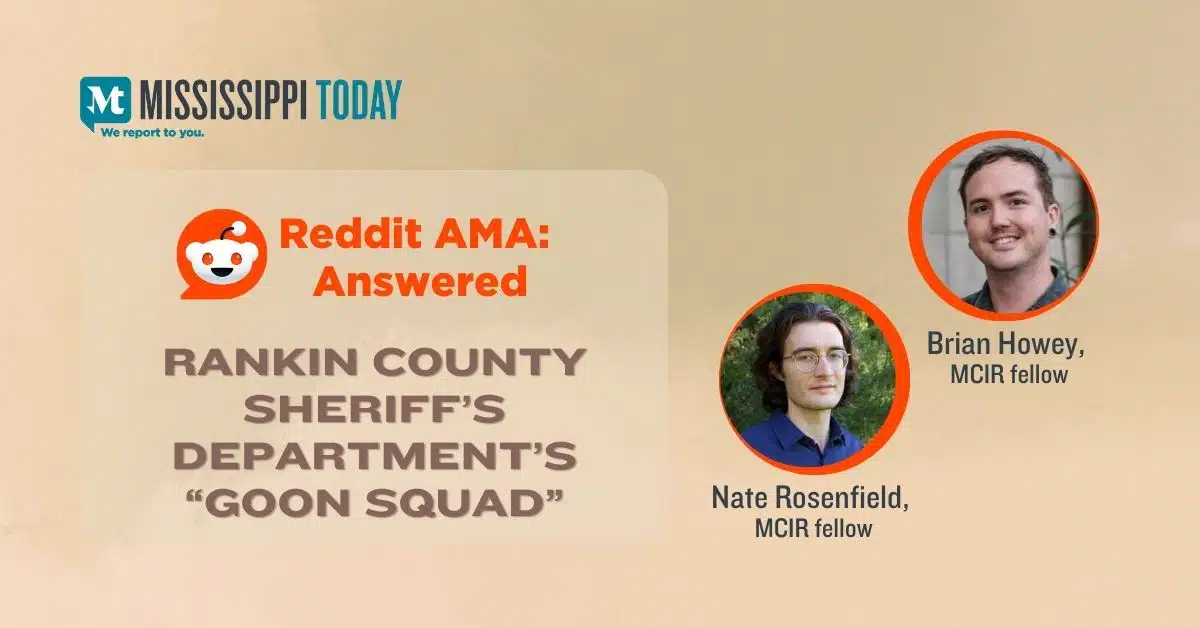

Brian Howey and Nate Rosenfield, Mississippi Center of Investigative Reporting at Mississippi Today fellows, answered your questions on Reddit about the Rankin County Sheriff’s Department’s “Goon Squad,” a loose band of deputies who allegedly tortured residents for years.
Read their answers below and visit this page for more investigations on Mississippi sheriffs.
Some questions have been edited for length and clarity.
Q: Do you think that there are likely other Goon Squads across the state? And if so, how can we uncover them?
Click for Nate Rosenfield’s answer.
Great question! That’s definitely been on our minds as well. It’s hard for us to say at this point whether there are other ‘Goon Squads’ across the state. We’ve heard about similar allegations of abuse in other departments. We haven’t looked into whether any of these are related yet.
It was clear from the start with the Michael Jenkins and Eddie Parker case that the “Goon Squad” wasn’t limited to the Rankin County Sheriff’s Department. One of the men was a Richland PD officer. But we don’t know the full extent of this overlap between departments or even how involved this one officer was in other incidents.
To find out more we’re going to use the same old shoe leather reporting methods. Talk to people who say they’ve experienced this type of conduct, file records requests with the departments and pursue these questions doggedly until we find answers.
Q: How could someone without a journalism degree (but a degree nonetheless) get involved with work like this?
Click for Nate Rosenfield’s answer.
Do you mean doing investigative work? I would throw out a little bit of caution there. One thing to consider is the sensitivity and danger of this case for so many of the people involved. Our investigation was backed by a whole team of editors, lawyers and investigative reporters and the New York Times and Mississippi Today with decades of experience in pursing investigations following ethical and legal guidelines.
But there are aspects of this that anyone can pursue. Any citizen can file public records requests with these departments that abide by Mississippi’s public records laws. You can attend county board of supervisor meetings and local protests and press conferences where leaders and activists are discussing this issue to learn more. And you can try to talk with public officials about their conduct and what they’re doing to prevent these kinds of abuses.
It’s so important for everyone to be engaged, informed, curious and invested in these issues.
Q: What is the state of FOIA law(s) in Mississippi, as compared to other states, and are head sheriffs in Mississippi an elected or appointed position? If elected, did that in any way play a role in the, for lack of a better phrase, culture of lawlessness that developed in that office?
Click for Nate Rosenfield’s answer.
The FOIA laws here are similar to other states. Actually the time span in which agencies have to respond is pretty quick here—only seven days. But like with all states, the reality is that responsiveness is going to vary by agency. Each agency has their own resources and cultures around facilitating public access to records. And there are specific provisions of the law that apply to different agencies and circumstances. I’m going to shout out Robert Wentworth at the MS Department of Public Safety as one of the most considerate, professional and swift public records administrators I’ve ever worked with. If you have specific questions about the laws, I’m happy to try to dig around and learn more for you.
Sheriffs are elected positions. One important aspect of how the role operates is that Sheriff’s don’t have other offices that they are beholden too. For instance, local police departments are usually overseen by municipal governments, which typically have the ability to fire department leaders. But that’s not true for Sheriff’s. Their departments can be investigated by other law enforcement agencies like MBI and the FBI for criminal conduct. And their budgetary decisions have to be approved by the county board of supervisors. But it’s really hard to fire a sheriff for doing a bad job. They really have to be deposed through elections for the most part.
Whether that accounts for the lawlessness in the department, I can’t say. But I would point out that Sheriff’s typically have a lot power politically and legally within the counties they oversee. Our investigative series is trying to explore what kinds of abuses can occur in these departments with the current state of oversight.
Q: What consequences do you reasonably expect them to face for their actions? What consequences are you hoping for?
Click for Nate Rosenfield’s answer.
Our job as reporters is to try to get the truth out there. What happens after that is best left up to the public.
I can say that the sentencing guidelines for the crimes the six officers indicted this summer are currently facing are steep. They could be serving decades in prison. And that’s just for those two incidents.
Q: How do we stop this happening again? Can the law be changed to prevent it being set up by other people? If so, who is stopping that from happening?
Click for Nate Rosenfield’s answer.
As a reporter I might not have the best answer for this question.
I think it’s important to consider all the things that went right in this situation and helped bring the truth forward as a model for how to prevent similar abuse in the future.
A few years ago, a state law was introduced that mandated that MBI look into any officer involved shootings in Mississippi. That’s what got them on the scene right away when Michael Jenkins was shot. And it’s our understanding that MBI began to see signs of wrongdoing and that’s when the Feds were brought in.
In all of the cases we looked into, no one was shot.
Also, the justice department conducted an incredibly swift and thorough investigation and provided a lot of detail to the public about what they found. The criminal information that was produced during the officers’ indictment gave a detailed walk through of everything they did that night. This helped bring clarity and attention to the issue.
What we see in both cases is outside agencies with mandates to investigate wrongdoing by law enforcement agencies acting swiftly and informing the public.
Whether this should have happened sooner and what checks and balances to put in place to ensure that it will in the future is a bigger question it might be best to ask your local congressional leaders.
I’ll add that accountability in policing is a massive issue nationally with a long history. If you’re looking for an introduction into the legal frameworks for holding police accountable I’d personally recommend this book: https://www.amazon.com/Shielded-How-Police-Became-Untouchable/dp/0593299361 It’s definitely got an argument it’s putting forward, but it’s also a really comprehensive look at the legal frameworks currently in place and how they came to be.
Q: Is the justice department still investigating the department or other officers?
Click for Brian Howey’s answer.
Yes, the Justice Department is still investigating the Rankin County Sheriff’s Department. A couple days after our story published, the DoJ published this press release, asking for anyone who’d experienced abuse at the hands of Rankin deputies to contact them as soon as possible.
Q: A couple of months ago, an attorney with the Rankin SO resigned (I think his last name was Holly), what can you tell us about his resignation? Also, I read where there were 6,000 write in votes opposing Sheriff Bailey, which lead me to wonder, what are the legal/political mechanisms available to Rankin county voters to remove Sheriff Bailey?
Click for Nate Rosenfield’s answer.
Paul Holley was the department’s lawyer. He then briefly became undersheriff before resigning in Oct. We’re not sure exactly why he resigned. He made a public statement that didn’t explain exactly why he left. We found department records that showed Holley was present at one on of the incidents we reported on. We don’t know what if any involvement he had though. He’s working for the Attorney General’s office now I believe.
The most direct and powerful legal mechanism voters have to remove Bailey is to vote during the next election. Also there needs to be organizing to rally a contender. He ran unopposed this year.
Q: Have you taken a look at how many people Christian Dedmon has shot (or how many officer involved shootings he has been present for) vs any other officer at a different agency? because i think that could be interesting.
Click for Brian Howey’s answer.
Thanks for this question! In addition to the shooting of Michael Jenkins, we know that Christian Dedmon was present during the fatal shootings of Pierre Woods and Shawn Fondren, and that he fired his weapon during the incident involving Shawn Fondren. How that compares to officers at other agencies depends on which agency and which officer you’re looking at. Many police officers go their entire careers without firing their weapons in the line of duty. A few have been involved in several shootings. As a deputy who was present for at least three shootings, Mr. Dedmon appears to fit somewhere in the middle of those two poles.
Q: Could y’all speak a little about the areas of Rankin that a lot of these incidents took place and did anything about the locations in particular facilitate officers ability to get away with unethical behavior?
Click for Brian Howey’s answer.
This is a great question. Based on the incidents we reviewed, the majority of these alleged torture cases occurred in low-income neighborhoods in Rankin County. Many of these local residents described near-nightly raids in their communities. Certain neighborhoods, such as the Robinhood community in Brandon, Miss., were especially popular areas for the deputies. So yes, location was a factor, but it’s more complicated than that…
Nearly all of the people targeted by the deputies were suspected drug users or small-time dealers. Combine their income with their drug use, and you have a group of people who are unlikely to be believed by authority figures. And that’s exactly what we saw: even in cases where people lodged complaints, filed lawsuits, and fought their criminal charges, even when they showed up to court visibly injured, there doesn’t appear to have been any serious investigation conducted by anyone with the authority to do so. I hope that answers your question!
Q: Is there a federal investigation into RCSO?
Click for Brian Howey’s answer.
Yes, the Justice Department has investigated the incident involving Michael Jenkins and Eddie Parker and filed charged against 5 deputies and a local police officer for their roles in that incident. Those six officers also face state charges for the same incident. The DoJ’s investigation is ongoing, and shortly after we published our investigation, the department requested more information from anyone who’d experienced abuse at the hands of Rankin deputies.
Q: Are there any additional members to the goon squad that were not present for this incident? Or is good squad use to describe the entire RCSO?
Click for Brian Howey’s answer.
It’s difficult to say who was officially a “member” of the Goon Squad, which was a night shift of patrol deputies at the Rankin County Sheriff’s Department. What we can say is that we used department incident reports, dispatch records and Taser logs to identify 20 deputies who were listed as present during the additional alleged torture incidents we uncovered. Five of those deputies are currently facing criminal charges. What role those additional 15 deputies played in these incidents is hard to determine, but we were able to identify several deputies who have so far eluded criminal charges and who appear to have triggered their Tasers during several of these alleged torture incidents.
Q: Has the county leader commented on any of this? Gains, Cross? Have you attempted to talk with them?
Click for Brian Howey’s answer.
We asked for comments from several local leaders before we published our story, they either declined to comment or did not respond. We will continue to ask!
Q: Do you know of any recall efforts or protest?
Click for Brian Howey’s answer.
There have been several protests at the Rankin County Sheriff’s Office and other locations around county, as well as numerous calls for Sheriff Bryan Bailey to resign. We’ve been told there are additional protests in the works as well.
Q: We’re being told time and again about this kind of behavior from law enforcement. What realistically can change, even with more and more reports from media outlets like yourselves, and what defense do you have against cops with a vendetta against your media, a la Kansas’s Marion County Record raid?
Click for Brian Howey’s answer.
I think these would make for great questions for your local, state and national lawmakers, who have the power to implement stronger accountability mechanisms for law enforcement agencies, something we’ve seen happen across the country in the wake of George Floyd’s murder. One thing our and our colleagues’ reporting has exposed is the general lack of effective accountability mechanisms for sheriff’s departments, especially in Mississippi. That this extreme level of alleged misconduct could continue for nearly 20 years before triggering a serious investigation by a higher authority is astounding. This can change, but that change requires action by local, state and national representatives. As journalists, all we can do is deliver the truth and hope that voters and lawmakers put that information to good use.
As reporters, our best defenses against anyone that seeks to quash the freedom of the press are the First Amendment and voters. We’re extremely lucky to enjoy constitutional protections that enshrine our ability to do our work with little fear of reprisals. But we’ve never seen a greater threat to press freedoms than we are seeing today. We rely on the public and elected officials to hold accountable anyone who seeks to infringe on those rights and protect our ability to do hard-nosed reporting. We also rely on readers who support good journalism, especially local journalism! So if you want to keep reading investigative reporting like Nate’s and my deep-dive into the Goon Squad, make sure to support your local news outlet!
Q: Have you had to make changes to your own lifestyle out of safety / have you ever feared for your own safety after all of this? With how insane these accounts are, I’m concerned for you all.
Click for Nate Rosenfield’s answer.
I really appreciate this question and your concern for us. We definitely had to manage safety issues throughout the reporting process. We have a whole team at the Times devoted to this that we consulted with. We had to think a lot about how to protect ourselves and our sources. Fortunately, everything’s worked out fine so far. But it’s definitely been a stressful part of this process.
Q: Have you looked into other areas of Mississippi for similar corruption and/or scandals?
Click for Nate Rosenfield’s answer.
Jerry Mitchell and Ilyssa Daly, two amazing reporters on our team, did incredible investigations into the Clay County Sheriff’s Department and the Noxubee County Sheriff’s Department. You should definitely check them out!
Q: Do you truly believe the Sheriff wasn’t aware like he is saying?
Click for Nate Rosenfield’s answer.
I think we found some compelling evidence that the Sheriff had been alerted that there was a problem. Multiple sources told us they filed complaints, wrote letters, sent facebook messages to the sheriff directly or called him on the phone to talk about the abuse of these same deputies.
Q: Have you guys heard of the Pasco Sheriff FL squad of deputies that would target and harass citizens? You guys should look into it. They are being sued but rumor is it is still ongoing. No physical torture but definitely psychological. I wonder how similar these groups operated.
Click for Nate Rosenfield’s answer.
Yeah! There was a great investigation on this by the Tampa Bay Times. Truly insane. It seems like that was a case where official department policy went haywire, leading to potentially unconstitutional conduct rather than a group of officers engaging in explicitly criminal conduct and covering up their actions, like what’s been alleged here. But there are definitely some important overlaps, good point!
Q: Are you guys going to do an investigation into the city police departments within Rankin County? like Pearl Brandon or Richland? I read where the Pearl Police Chief was involved in at least one of the incidents. Will he be investigated? Do you think that he should be allowed to lead a force if he was apart of the Goon Squad?
Click for Nate Rosenfield’s answer.
Great question! We’re still looking into the level of involvement of officers at other departments. One Richland PD officer was involved in the Michael Jenkins and Eddie Parker case. And we reported that the current Pearl Police Chief, Dean Scott was present at least one of the incidents in our story when he was a Rankin Sheriff’s Deputy. Whether that raises questions about his fitness for office is for the community and their representatives to decide. But it’s an important question!
Q: It amazes me that these people, Baltimore’s infamous gun trace task force, LAs ‘gang’, all operate for years before doing something stupid and getting caught. You’d think with social media, these folks would tend to gravitate together. Were you able to find any social media ties between this bunch and officers at other departments that would be outside their locale?
Click for Nate Rosenfield’s answer.
Great question! We found that some of the these deputies had social media contacts with officers at other departments. That alone doesn’t say much, but it’s definitely a lead. We haven’t spotted anything overt about collaboration in misconduct on social media though.
Q: Were they gooning for someone bigger than the sheriff?
Click for Nate Rosenfield’s answer.
That’s a big question. We’re hoping to find the answer. Still very unclear at this point but if we find anything you’ll know about it. Stay posted.
Q: What is the likelihood other such “gangs” are operating across Mississippi LEOs? I believe this kind of thing is an off-shoot of the militarization of local police — in the Jackson metro area, how many SWAT teams, response teams, drug task forces, etc., are there? Probably a mind-blowing number of teams, and they probably all share the same 25-50 personnel.
Click for Nate Rosenfield’s answer.
We’re definitely looking into similar conduct across different departments. We didn’t find that the events we reported on in Rankin had to do with any militarization of the department. But we haven’t looked into that issue in the area. Definitely worth further exploration. Great questions!
Q: Have any of the accused made a statement about their alleged actions?
Click for Nate Rosenfield’s answer.
Not yet. We expect that the officers who’ve been indicted will speak at their sentencing in January. And others may come forward with time. But so far we’ve been met with silence.
Q: How much support does the goon squad have from locals and other citizens of Mississippi? How many, cops or otherwise, wish they could get away what those guys did? Do you believe a majority of Mississippi citizens agree that a person’s civil rights are forfeit as soon as they’re accused of a crime?
Click for Nate Rosenfield’s answer.
I know that the mood in Rankin County shifted a lot after the federal indictment came down this summer and after our story dropped last month. A few months ago we heard a fair amount of skepticism about what was going on in the department. Now we’re hearing pretty unanimous outrage.
I can’t speak for cops or the majority of Mississippians. But I can say that most of what we’ve heard from community members in the area in the past few weeks—including people involved in law enforcement—has been condemnation of these deputies’s actions.
Q: Do you know if they could possibly be charged for sexual assault since they apparently used a sex toy during the torture.
Click for Nate Rosenfield’s answer.
The Federal case against the officers were related to constitutional violations, not criminal charges. The state cases against the 6 officers in August were criminal. They were mostly related to covering up evidence. Hunter Elward, who fired the gun in Michael Jenkins mouth, was charged with assault. There were no charges related to the sexual violence. That doesn’t mean state prosecutors couldn’t have pursued those charges or won’t in other cases, but so far that hasn’t been their strategy.
This article first appeared on Mississippi Today and is republished here under a Creative Commons license.
Did you miss our previous article…
https://www.biloxinewsevents.com/?p=313608
Mississippi Today
Presidents are taking longer to declare major natural disasters. For some, the wait is agonizing
TYLERTOWN — As an ominous storm approached Buddy Anthony’s one-story brick home, he took shelter in his new Ford F-250 pickup parked under a nearby carport.
Seconds later, a tornado tore apart Anthony’s home and damaged the truck while lifting it partly in the air. Anthony emerged unhurt. But he had to replace his vehicle with a used truck that became his home while waiting for President Donald Trump to issue a major disaster declaration so that federal money would be freed for individuals reeling from loss. That took weeks.
“You wake up in the truck and look out the windshield and see nothing. That’s hard. That’s hard to swallow,” Anthony said.
Disaster survivors are having to wait longer to get aid from the federal government, according to a new Associated Press analysis of decades of data. On average, it took less than two weeks for a governor’s request for a presidential disaster declaration to be granted in the 1990s and early 2000s. That rose to about three weeks during the past decade under presidents from both major parties. It’s taking more than a month, on average, during Trump’s current term, the AP found.
The delays mean individuals must wait to receive federal aid for daily living expenses, temporary lodging and home repairs. Delays in disaster declarations also can hamper recovery efforts by local officials uncertain whether they will receive federal reimbursement for cleaning up debris and rebuilding infrastructure. The AP collaborated with Mississippi Today and Mississippi Free Press on the effects of these delays for this report.
“The message that I get in the delay, particularly for the individual assistance, is that the federal government has turned its back on its own people,” said Bob Griffin, dean of the College of Emergency Preparedness, Homeland Security and Cybersecurity at the University at Albany in New York. “It’s a fundamental shift in the position of this country.”
The wait for disaster aid has grown as Trump remakes government
The Federal Emergency Management Agency often consults immediately with communities to coordinate their initial disaster response. But direct payments to individuals, nonprofits and local governments must wait for a major disaster declaration from the president, who first must receive a request from a state, territory or tribe. Major disaster declarations are intended only for the most damaging events that are beyond the resources of states and local governments.
Trump has approved more than two dozen major disaster declarations since taking office in January, with an average wait of almost 34 days after a request. That ranged from a one-day turnaround after July’s deadly flash flooding in Texas to a 67-day wait after a request for aid because of a Michigan ice storm. The average wait is up from a 24-day delay during his first term and is nearly four times as long as the average for former Republican President George H.W. Bush, whose term from 1989-1993 coincided with the implementation of a new federal law setting parameters for disaster determinations.
The delays have grown over time, regardless of the party in power. Former Democratic President Joe Biden, in his last year in office, averaged 26 days to declare major disasters — longer than any year under former Democratic President Barack Obama.

FEMA did not respond to the AP’s questions about what factors are contributing to the trend.
Others familiar with FEMA noted that its process for assessing and documenting natural disasters has become more complex over time. Disasters have also become more frequent and intense because of climate change, which is mostly caused by the burning of fuels such as gas, coal and oil.
The wait for disaster declarations has spiked as Trump’s administration undertakes an ambitious makeover of the federal government that has shed thousands of workers and reexamined the role of FEMA. A recently published letter from current and former FEMA employees warned the cuts could become debilitating if faced with a large-enough disaster. The letter also lamented that the Trump administration has stopped maintaining or removed long-term planning tools focused on extreme weather and disasters.
Shortly after taking office, Trump floated the idea of “getting rid” of FEMA, asserting: “It’s very bureaucratic, and it’s very slow.”
FEMA’s acting chief suggested more recently that states should shoulder more responsibility for disaster recovery, though FEMA thus far has continued to cover three-fourths of the costs of public assistance to local governments, as required under federal law. FEMA pays the full cost of its individual assistance.
Former FEMA Administrator Pete Gaynor, who served during Trump’s first term, said the delay in issuing major disaster declarations likely is related to a renewed focus on making sure the federal government isn’t paying for things state and local governments could handle.
“I think they’re probably giving those requests more scrutiny,” Gaynor said. “And I think it’s probably the right thing to do, because I think the (disaster) declaration process has become the ‘easy button’ for states.”
The Associated Press on Monday received a statement from White House spokeswoman Abigail Jackson in response to a question about why it is taking longer to issue major natural disaster declarations:
“President Trump provides a more thorough review of disaster declaration requests than any Administration has before him. Gone are the days of rubber stamping FEMA recommendations – that’s not a bug, that’s a feature. Under prior Administrations, FEMA’s outsized role created a bloated bureaucracy that disincentivized state investment in their own resilience. President Trump is committed to right-sizing the Federal government while empowering state and local governments by enabling them to better understand, plan for, and ultimately address the needs of their citizens. The Trump Administration has expeditiously provided assistance to disasters while ensuring taxpayer dollars are spent wisely to supplement state actions, not replace them.”

In Mississippi, frustration festered during wait for aid
The tornado that struck Anthony’s home in rural Tylertown on March 15 packed winds up to 140 mph. It was part of a powerful system that wrecked homes, businesses and lives across multiple states.
Mississippi’s governor requested a federal disaster declaration on April 1. Trump granted that request 50 days later, on May 21, while approving aid for both individuals and public entities.
On that same day, Trump also approved eight other major disaster declarations for storms, floods or fires in seven other states. In most cases, more than a month had passed since the request and about two months since the date of those disasters.
If a presidential declaration and federal money had come sooner, Anthony said he wouldn’t have needed to spend weeks sleeping in a truck before he could afford to rent the trailer where he is now living. His house was uninsured, Anthony said, and FEMA eventually gave him $30,000.
In nearby Jayess in Lawrence County, Dana Grimes had insurance but not enough to cover the full value of her damaged home. After the eventual federal declaration, Grimes said FEMA provided about $750 for emergency expenses, but she is now waiting for the agency to determine whether she can receive more.

“We couldn’t figure out why the president took so long to help people in this country,” Grimes said. “I just want to tie up strings and move on. But FEMA — I’m still fooling with FEMA.”
Jonathan Young said he gave up on applying for FEMA aid after the Tylertown tornado killed his 7-year-old son and destroyed their home. The process seemed too difficult, and federal officials wanted paperwork he didn’t have, Young said. He made ends meet by working for those cleaning up from the storm.
“It’s a therapy for me,” Young said, “to pick up the debris that took my son away from me.”
Historically, presidential disaster declarations containing individual assistance have been approved more quickly than those providing assistance only to public entities, according to the AP’s analysis. That remains the case under Trump, though declarations for both types are taking longer.
About half the major disaster declarations approved by Trump this year have included individual assistance.
Some people whose homes are damaged turn to shelters hosted by churches or local nonprofit organizations in the initial chaotic days after a disaster. Others stay with friends or family or go to a hotel, if they can afford it.
But some insist on staying in damaged homes, even if they are unsafe, said Chris Smith, who administered FEMA’s individual assistance division under three presidents from 2015-2022. If homes aren’t repaired properly, mold can grow, compounding the recovery challenges.
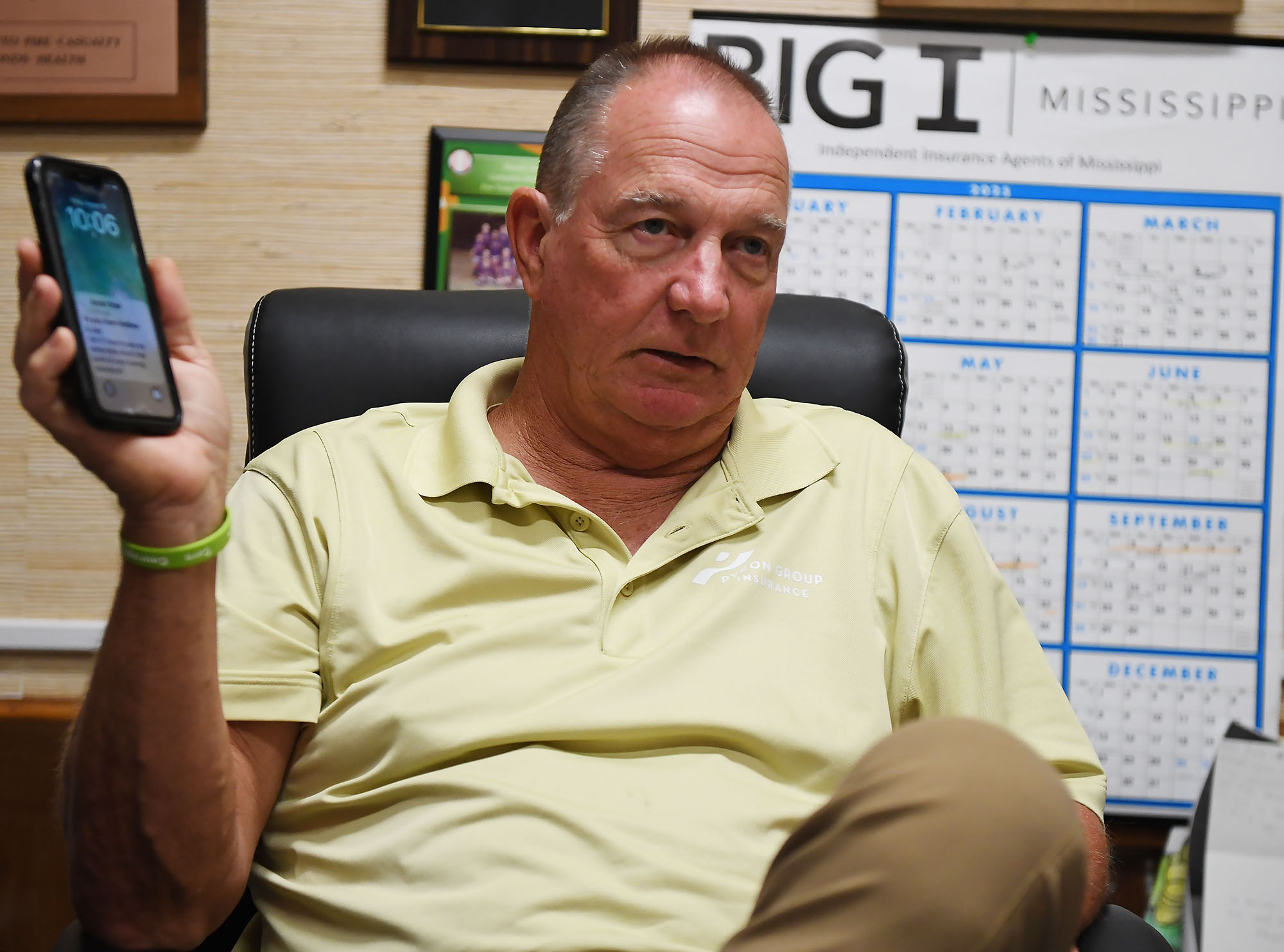
That’s why it’s critical for FEMA’s individual assistance to get approved quickly — ideally, within two weeks of a disaster, said Smith, who’s now a disaster consultant for governments and companies.
“You want to keep the people where they are living. You want to ensure those communities are going to continue to be viable and recover,” Smith said. “And the earlier that individual assistance can be delivered … the earlier recovery can start.”
In the periods waiting for declarations, the pressure falls on local officials and volunteers to care for victims and distribute supplies.
In Walthall County, where Tylertown is, insurance agent Les Lampton remembered watching the weather news as the first tornado missed his house by just an eighth of a mile. Lampton, who moonlights as a volunteer firefighter, navigated the collapsed trees in his yard and jumped into action. About 45 minutes later, the second tornado hit just a mile away.
“It was just chaos from there on out,” Lampton said.
Walthall County, with a population of about 14,000, hasn’t had a working tornado siren in about 30 years, Lampton said. He added there isn’t a public safe room in the area, although a lot of residents have ones in their home.
Rural areas with limited resources are hit hard by delays in receiving funds through FEMA’s public assistance program, which, unlike individual assistance, only reimburses local entities after their bills are paid. Long waits can stoke uncertainty and lead cost-conscious local officials to pause or scale-back their recovery efforts.
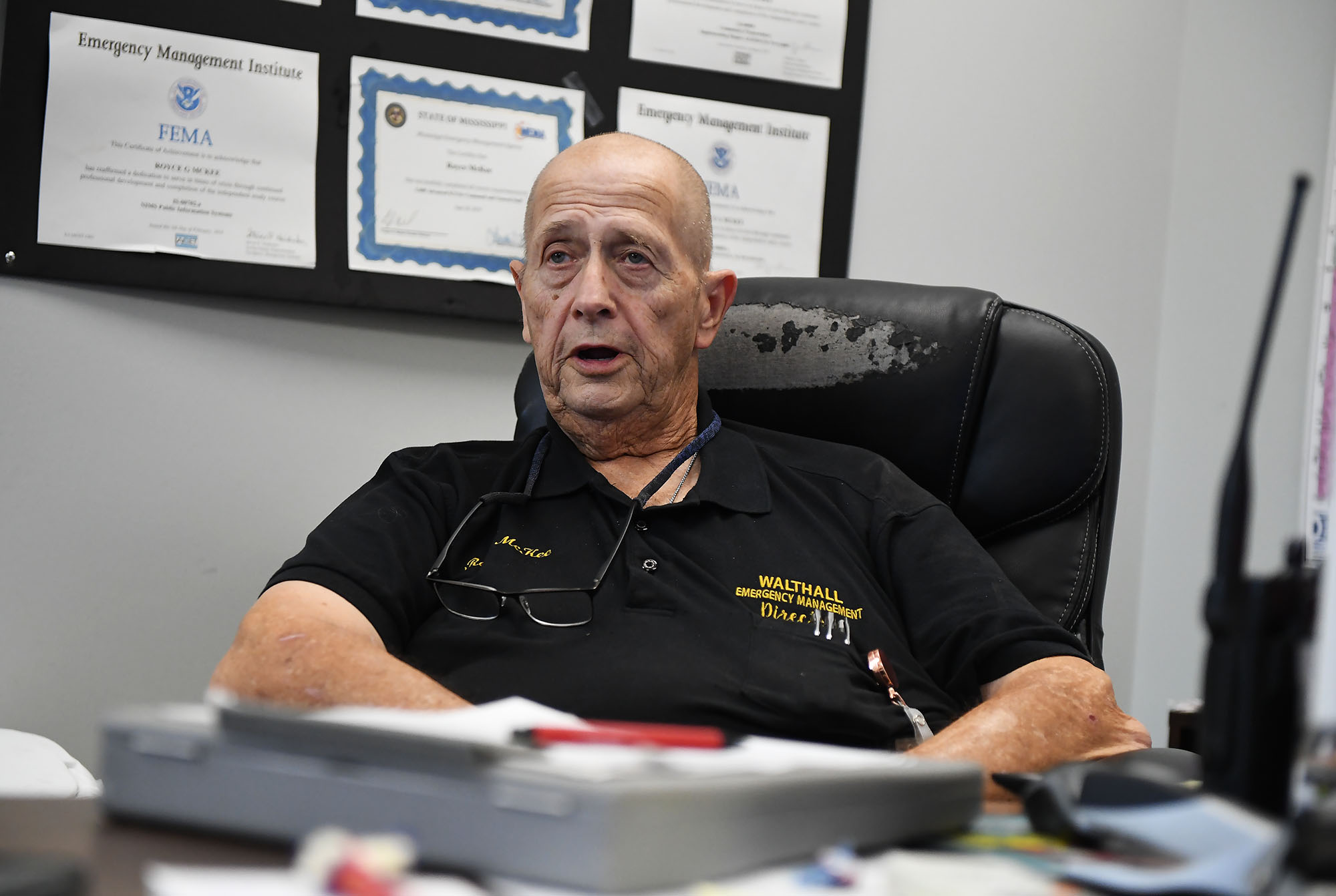
In Walthall County, officials initially spent about $700,000 cleaning up debris, then suspended the cleanup for more than a month because they couldn’t afford to spend more without assurance they would receive federal reimbursement, said county emergency manager Royce McKee. Meanwhile, rubble from splintered trees and shattered homes remained piled along the roadside, creating unsafe obstacles for motorists and habitat for snakes and rodents.
When it received the federal declaration, Walthall County took out a multimillion-dollar loan to pay contractors to resume the cleanup.
“We’re going to pay interest and pay that money back until FEMA pays us,” said Byran Martin, an elected county supervisor. “We’re hopeful that we’ll get some money by the first of the year, but people are telling us that it could be [longer].”
Lampton, who took after his father when he joined the volunteer firefighters 40 years ago, lauded the support of outside groups such as Cajun Navy, Eight Days of Hope, Samaritan’s Purse and others. That’s not to mention the neighbors who brought their own skid steers and power saws to help clear trees and other debris, he added.
“That’s the only thing that got us through this storm, neighbors helping neighbors,” Lampton said. “If we waited on the government, we were going to be in bad shape.”
Lieb reported from Jefferson City, Missouri, and Wildeman from Hartford, Connecticut.
Update 98/25: This story has been updated to include a White House statement released after publication.
This article first appeared on Mississippi Today and is republished here under a Creative Commons Attribution-NoDerivatives 4.0 International License.
The post Presidents are taking longer to declare major natural disasters. For some, the wait is agonizing appeared first on mississippitoday.org
Note: The following A.I. based commentary is not part of the original article, reproduced above, but is offered in the hopes that it will promote greater media literacy and critical thinking, by making any potential bias more visible to the reader –Staff Editor.
Political Bias Rating: Center-Left
This article presents a critical view of the Trump administration’s handling of disaster declarations, highlighting delays and their negative impacts on affected individuals and communities. It emphasizes concerns about government downsizing and reduced federal support, themes often associated with center-left perspectives that favor robust government intervention and social safety nets. However, it also includes statements from Trump administration officials defending their approach, providing some balance. Overall, the tone and framing lean slightly left of center without being overtly partisan.
Mississippi Today
Northeast Mississippi speaker and worm farmer played key role in Coast recovery after Hurricane Katrina
The 20th anniversary of Hurricane Katrina slamming the Mississippi Gulf Coast has come and gone, rightfully garnering considerable media attention.
But still undercovered in the 20th anniversary saga of the storm that made landfall on Aug. 29, 2005, and caused unprecedented destruction is the role that a worm farmer from northeast Mississippi played in helping to revitalize the Coast.
House Speaker Billy McCoy, who died in 2019, was a worm farmer from the Prentiss, not Alcorn County, side of Rienzi — about as far away from the Gulf Coast as one could be in Mississippi.
McCoy grew other crops, but a staple of his operations was worm farming.
Early after the storm, the House speaker made a point of touring the Coast and visiting as many of the House members who lived on the Coast as he could to check on them.
But it was his action in the forum he loved the most — the Mississippi House — that is credited with being key to the Coast’s recovery.
Gov. Haley Barbour had called a special session about a month after the storm to take up multiple issues related to Katrina and the Gulf Coast’s survival and revitalization. The issue that received the most attention was Barbour’s proposal to remove the requirement that the casinos on the Coast be floating in the Mississippi Sound.
Katrina wreaked havoc on the floating casinos, and many operators said they would not rebuild if their casinos had to be in the Gulf waters. That was a crucial issue since the casinos were a major economic engine on the Coast, employing an estimated 30,000 in direct and indirect jobs.
It is difficult to fathom now the controversy surrounding Barbour’s proposal to allow the casinos to locate on land next to the water. Mississippi’s casino industry that was birthed with the early 1990s legislation was still new and controversial.
Various religious groups and others had continued to fight and oppose the casino industry and had made opposition to the expansion of gambling a priority.
Opposition to casinos and expansion of casinos was believed to be especially strong in rural areas, like those found in McCoy’s beloved northeast Mississippi. It was many of those rural areas that were the homes to rural white Democrats — now all but extinct in the Legislature but at the time still a force in the House.
So, voting in favor of casino expansion had the potential of being costly for what was McCoy’s base of power: the rural white Democrats.
Couple that with the fact that the Democratic-controlled House had been at odds with the Republican Barbour on multiple issues ranging from education funding to health care since Barbour was inaugurated in January 2004.
Barbour set records for the number of special sessions called by the governor. Those special sessions often were called to try to force the Democratic-controlled House to pass legislation it killed during the regular session.
The September 2005 special session was Barbour’s fifth of the year. For context, current Gov. Tate Reeves has called four in his nearly six years as governor.
There was little reason to expect McCoy to do Barbour’s bidding and lead the effort in the Legislature to pass his most controversial proposal: expanding casino gambling.
But when Barbour ally Lt. Gov. Amy Tuck, who presided over the Senate, refused to take up the controversial bill, Barbour was forced to turn to McCoy.
The former governor wrote about the circumstances in an essay he penned on the 20th anniversary of Hurricane Katrina for Mississippi Today Ideas.
“The Senate leadership, all Republicans, did not want to go first in passing the onshore casino law,” Barbour wrote. “So, I had to ask Speaker McCoy to allow it to come to the House floor and pass. He realized he should put the Coast and the state’s interests first. He did so, and the bill passed 61-53, with McCoy voting no.
“I will always admire Speaker McCoy, often my nemesis, for his integrity in putting the state first.”
Incidentally, former Rep. Bill Miles of Fulton, also in northeast Mississippi, was tasked by McCoy with counting, not whipping votes, to see if there was enough support in the House to pass the proposal. Not soon before the key vote, Miles said years later, he went to McCoy and told him there were more than enough votes to pass the legislation so he was voting no and broached the idea of the speaker also voting no.
It is likely that McCoy would have voted for the bill if his vote was needed.
Despite his no vote, the Biloxi Sun Herald newspaper ran a large photo of McCoy and hailed the Rienzi worm farmer as a hero for the Mississippi Gulf Coast.
This article first appeared on Mississippi Today and is republished here under a Creative Commons Attribution-NoDerivatives 4.0 International License.
The post Northeast Mississippi speaker and worm farmer played key role in Coast recovery after Hurricane Katrina appeared first on mississippitoday.org
Note: The following A.I. based commentary is not part of the original article, reproduced above, but is offered in the hopes that it will promote greater media literacy and critical thinking, by making any potential bias more visible to the reader –Staff Editor.
Political Bias Rating: Centrist
The article presents a factual and balanced account of the political dynamics surrounding Hurricane Katrina recovery efforts in Mississippi, focusing on bipartisan cooperation between Democratic and Republican leaders. It highlights the complexities of legislative decisions without overtly favoring one party or ideology, reflecting a neutral and informative tone typical of centrist reporting.
Mississippi Today
PSC moves toward placing Holly Springs utility into receivership
NEW ALBANY — After five hours in a courtroom where attendees struggled to find standing room, the Mississippi Public Service Commission voted to petition a judge to put the Holly Springs Utility Department into a receivership.
The PSC held the hearing Thursday about a half hour drive west from Holly Springs in New Albany, known as “The Fair and Friendly City.” Throughout the proceedings, members of the PSC, its consultants and Holly Springs officials emphasized there was no precedent for what was going on.
The city of Holly Springs has provided electricity through a contract with the Tennessee Valley Authority since 1935. It serves about 12,000 customers, most of whom live outside the city limits. While current and past city officials say the utility’s issues are a result of financial negligence over many years, the service failures hit a boiling point during a 2023 ice storm where customers saw outages that lasted roughly two weeks as well as power surges that broke their appliances.
Those living in the service area say those issues still occur periodically, in addition to infrequent and inaccurate billing.
“I moved to Marshall County in 2020 as a place for retirement for my husband and I, and it’s been a nightmare for five years,” customer Monica Wright told the PSC at Thursday’s hearing. “We’ve replaced every electronic device we own, every appliance, our well pump and our septic pumps. It has financially broke us.
“We’re living on prayers and promises, and we need your help today.”
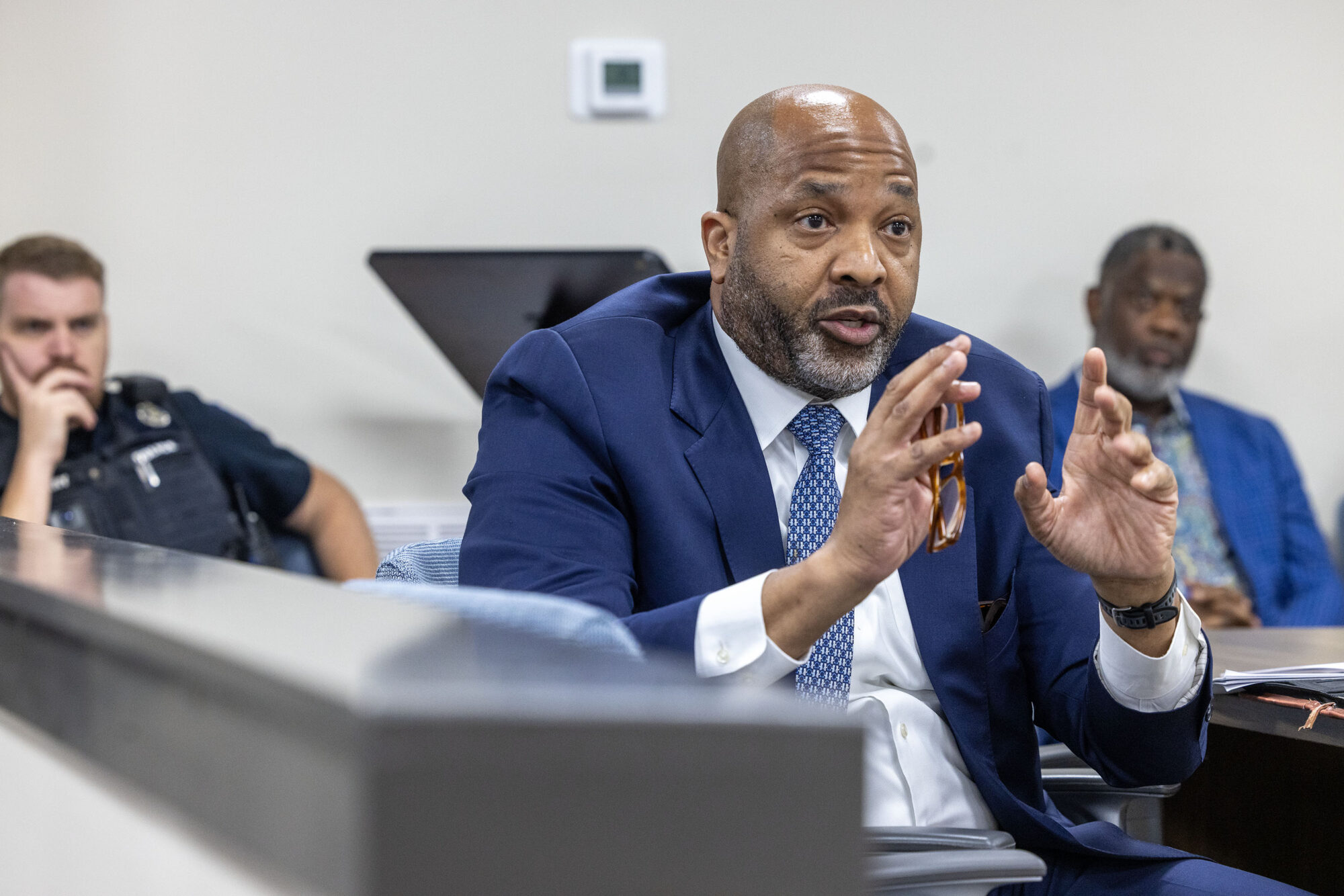
Another customer, Roscoe Sitgger of Michigan City, said he recently received a series of monthly bills between $500 and $600.
Following a scathing July report by Silverpoint Consulting that found Holly Springs is “incapable” of running the utility, the three-member PSC voted unanimously on Thursday to determine the city isn’t providing “reasonably adequate service” to its customers. That language comes from a 2024 state bill that gave the commission authority to investigate the utility.
The bill gives a pathway for temporarily removing the utility’s control from the city, allowing the PSC to petition a chancery judge to place the department into the hands of a third party. The PSC voted unanimously to do just that.
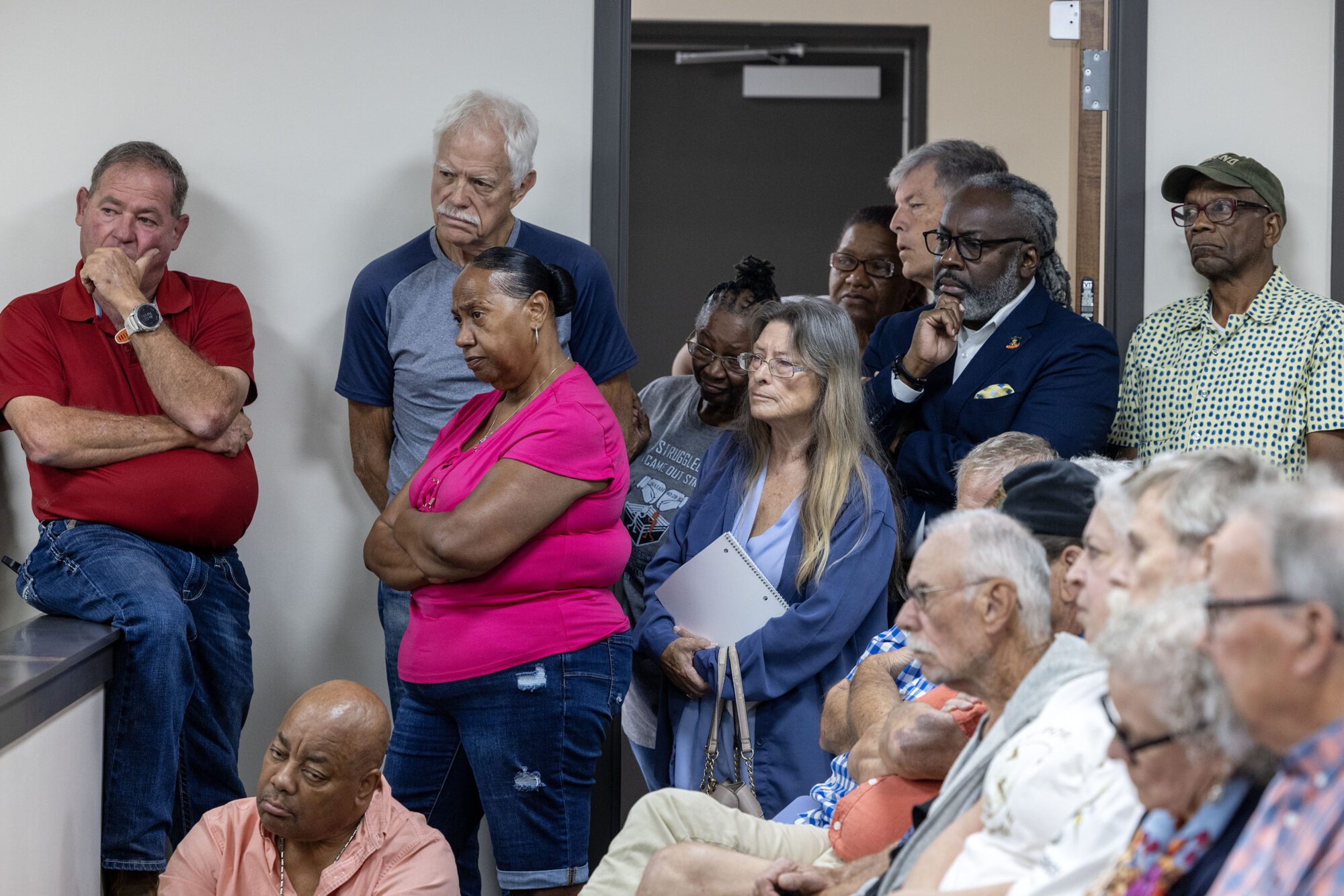
Thursday’s hearing gave the commission its first chance to direct official questions at Holly Springs representatives. Newly elected Mayor Charles Terry, utility General Manager Wayne Jones and City Attorney John Keith Perry fielded an array of criticism from the PSC. In his rebuttal, Perry suggested that any solution — whether a receivership or selling the utility — would take time to implement, and requested 24 months for the city to make incremental improvements. Audience members shouted, “No!” as Perry spoke.
“We are in a crisis now,” responded Northern District Public Service Commissioner Chris Brown. “To try to turn the corner in incremental steps is going to be almost impossible.”
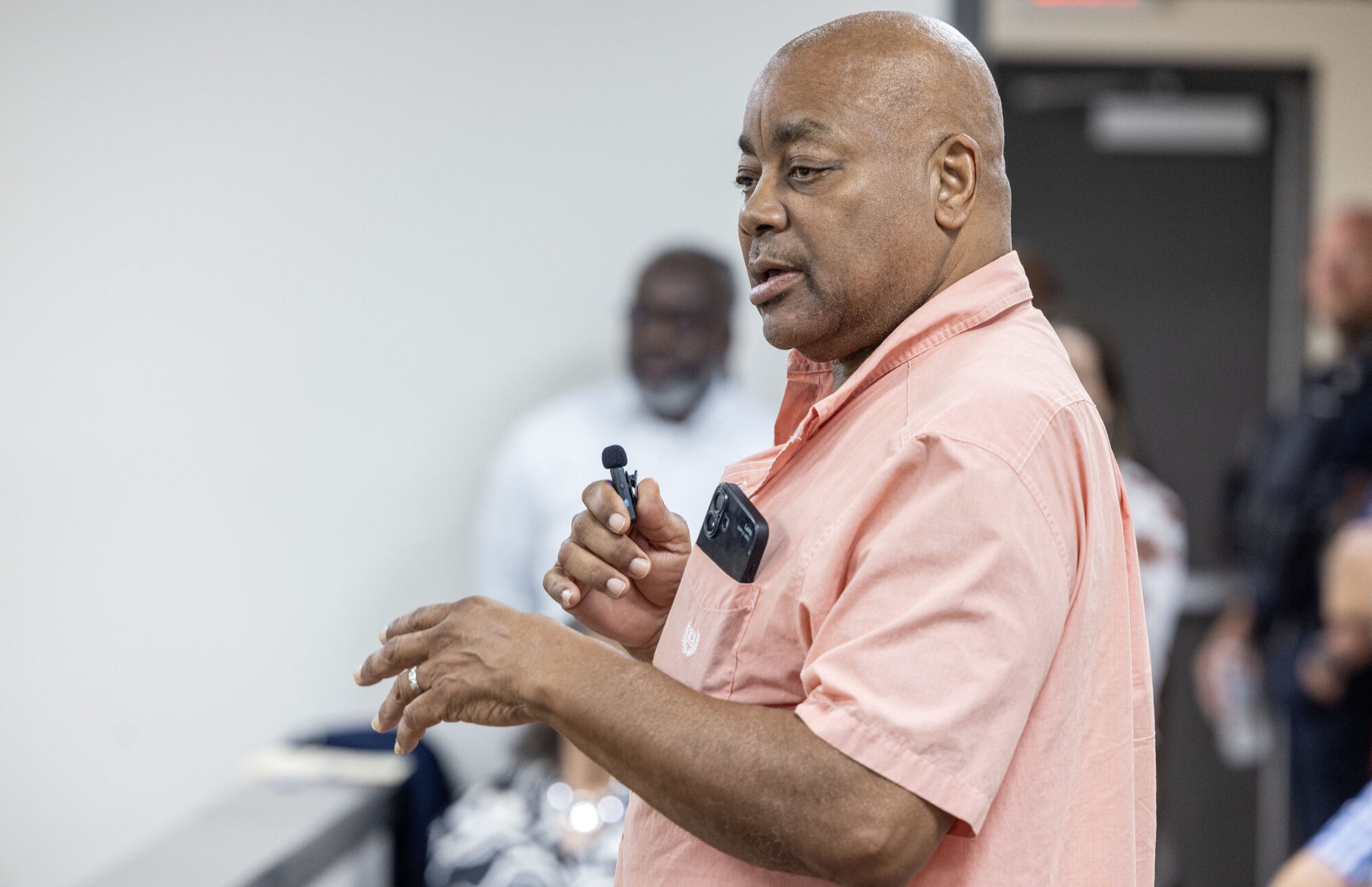
It’s unclear how much it would cost to fix the department’s long list of ailments. In 2023, TVPPA — a nonprofit that represents TVA’s local partners — estimated Holly Springs needs over $10 million just to restore its rights-of-way, and as much as $15 million to fix its substations. The department owes another $10 million in debt to TVA as well as its contractors, Brown said.
“The city is holding back the growth of the county,” said Republican Sen. Neil Whaley of Potts Camp, who passionately criticized the Holly Springs officials sitting a few feet away. “You’ve got to do better, you’ve got to realize you’re holding these people hostage, and it’s not right and it’s not fair… They are being represented by people who do not care about them as long as the bill is paid.”
In determining next steps, Silverpoint Principal Stephanie Vavro told the PSC it may be hard to find someone willing to serve as receiver for the utility department, make significant investments and then hand the keys back to the city. The 2024 bill, Vavro said, doesn’t limit options to a receivership, and alternatives could include condemning the utility or finding a nearby utility to buy the service area.

Answering questions from Central District Public Service Commissioner De’Keither Stamps, Vavro said it’s unclear how much the department is worth, adding an engineer’s study would be needed to come up with a number.
Terry, who reminded the PSC he’s only been Holly Springs’ mayor for just over 60 days, said there’s no way the city can afford the repair costs on its own. The city’s median income is about $47,000, roughly $8,000 less than the state’s as a whole.
This article first appeared on Mississippi Today and is republished here under a Creative Commons Attribution-NoDerivatives 4.0 International License.
The post PSC moves toward placing Holly Springs utility into receivership appeared first on mississippitoday.org
Note: The following A.I. based commentary is not part of the original article, reproduced above, but is offered in the hopes that it will promote greater media literacy and critical thinking, by making any potential bias more visible to the reader –Staff Editor.
Political Bias Rating: Centrist
This article presents a factual and balanced account of the situation involving the Holly Springs Utility Department and the Mississippi Public Service Commission. It includes perspectives from various stakeholders, such as city officials, residents, and state commissioners, without showing clear favoritism or ideological slant. The focus is on the practical challenges and financial issues faced by the utility, reflecting a neutral stance aimed at informing readers rather than advocating a particular political viewpoint.
-
News from the South - Texas News Feed6 days ago
Texas high school football scores for Thursday, Sept. 4
-
News from the South - Louisiana News Feed6 days ago
Portion of Gentilly Ridge Apartments residents return home, others remain displaced
-
News from the South - North Carolina News Feed6 days ago
Hanig will vie for 1st Congressional District seat of Davis | North Carolina
-
News from the South - Alabama News Feed6 days ago
Alabama state employee insurance board to seek more funding, benefit changes
-
News from the South - Virginia News Feed6 days ago
Norfolk port project funding to be withdrawn amid federal cuts to offshore wind projects
-
Our Mississippi Home7 days ago
The Hummingbirds’ Last Hooray of Summer
-
News from the South - West Virginia News Feed6 days ago
WV Supreme Court will hear BOE’s appeal in vaccine lawsuit — but not right away
-
News from the South - Georgia News Feed6 days ago
More details expected on ICE raid at south Georgia plant | Georgia
















































